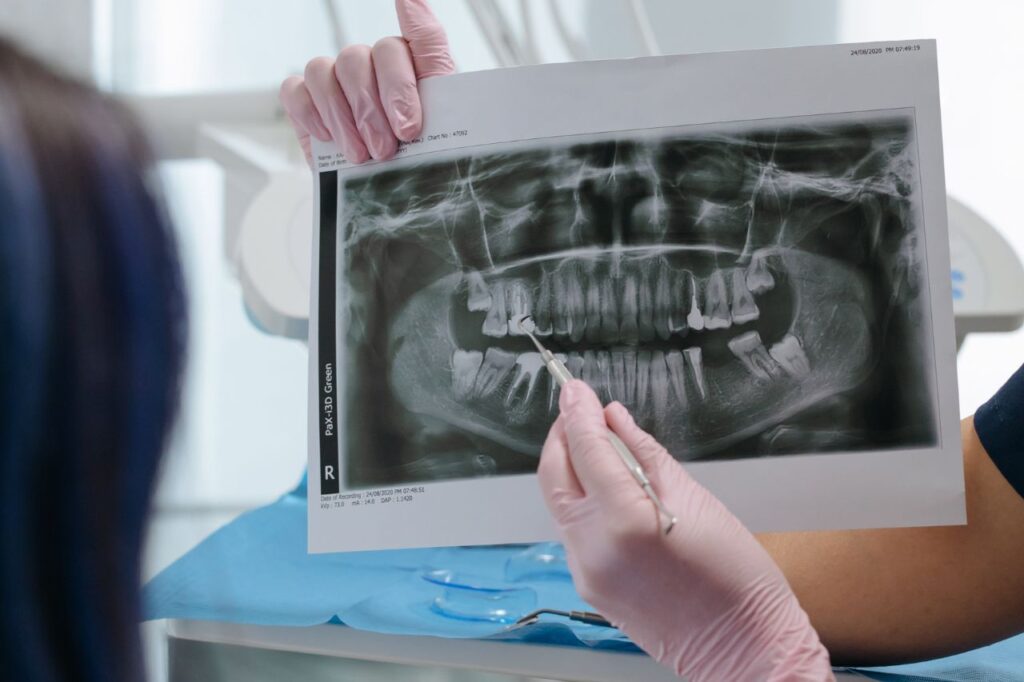5 Serious Reasons For A Retreatment Of Previous Root Canal
If you’ve ever had a root canal, you know that it’s not exactly a walk in the park. But sometimes, even after you’ve gone through the whole process, you might need to go back for more. That’s called retreatment, and it’s super important!
So, what exactly is a root canal? It’s a procedure that dentists use to treat an infected or damaged tooth. They go in and remove the pulp (the soft stuff inside your tooth) and clean out any bacteria or debris. Then, they fill the tooth and seal it up with a crown.
But sometimes, even after all that, you might still have problems. That’s where root canal retreatment comes in. These are 5 serious reasons why you might need to go back to your dentist.
In This Article:
What happens during root canal retreatment?
Of course, that depends on the reason for retreatment. Often, we will reopen your tooth to access the root canal filling material. This might mean removing crowns, posts, or other restorative materials.
Once we have access to the filling material, your general dentist will remove it and clean the canals. We will use magnification and illumination to examine the inside of your tooth and make sure we’ve treated all the canals and any unusual anatomy.

After cleaning the canals, your general dentist will fill and seal them, then put a temporary filling in the tooth. Sometimes, if the canals are very narrow or blocked, they might recommend endodontic surgery to seal the other end of the root.
When the root canal retreatment is complete, you’ll need to see your regular dentist to get a new crown or other restoration placed on the tooth. This will protect it and restore it to full function.
Reason 1: Incomplete or missed canals
When you get a root canal, the dentist removes the infected or damaged pulp from inside your tooth. They then clean out the canals, which are tiny channels that run from the pulp to the tip of your tooth’s root. After cleaning the canals, they fill them with a material to seal the tooth and prevent further infection.
In some cases, a tooth can have extra, narrow, or curved canals that are difficult to detect and treat during the initial root canal treatment. These canals may be smaller or more curved than the main canals and can be harder to see on X-rays or during the initial treatment. They’re overlooked.
Because they’re overlooked, these canals may not be thoroughly cleaned and filled during the initial root canal procedure. This can leave behind bacteria that can cause infection and other problems in the future.
If these extra or oddly shaped canals are not detected and treated, they can become a source of infection and lead to pain, swelling, and other issues with the tooth. In some cases, the infection can spread to other parts of the body and become very serious.
Retreatment can address this issue by allowing the general dentist to go back into the tooth and clean out any canals that were missed or not fully treated before. They use specialized tools to identify and treat any unusual canal anatomy, ensuring that the entire canal system is clean and free of bacteria. This can help prevent future infections and make it easier for your dentist to restore the tooth with a permanent filling or crown.

During the root canal retreatment, the dentist will go back into the tooth and use specialized tools and techniques to detect and treat any extra or oddly shaped canals. These can include:
● Microscopes, for high magnification and illumination
● Digital radiography uses digital sensors to capture highly detailed images of the tooth and its root canal system.
● Ultrasonic instruments, for high-frequency sound waves to help remove any remaining filling material or debris from the root canals.
● Rotary instruments are specialized instruments that can be used to shape and prepare the root canals for filling. They can be especially useful for treating extra or oddly shaped canals that are difficult to access with traditional hand instruments.
Reason 2: Salivary contamination of the inside of the tooth
Even if a root canal is successful, the tooth can occasionally still become re-infected if saliva gets inside. Saliva is full of bacteria, and if it gets into the tooth, it can re-ignite the infection.
Salivary contamination can occur when the restoration placed on top of the tooth after the root canal treatment is not properly sealed. This can allow saliva to leak into the tooth and cause an infection.
If the inside of the tooth becomes contaminated with saliva, the infection can cause pain, swelling, and even the loss of the tooth. In some cases, the infection can spread to other parts of the body and become life-threatening.
Root canal retreatment can address this issue by allowing the general dentist to remove the restoration and clean out any contaminated material from inside the tooth. They can then use specialized techniques to create a new seal and prevent saliva from leaking into the tooth in the future. This can help prevent future infection and protect the tooth from further damage.
Reason 3: Persistent or new infection
Even after a successful root canal procedure, there is still a possibility of a persistent or new infection. This can occur due to residual or missed bacteria that were not completely removed during the initial treatment or due to fracture or leakage of the tooth restoration.
If left untreated, persistent or new infections can lead to pain, swelling, abscess formation, and even tooth loss.
Retreatment can address persistent or new infections by allowing the dentist to thoroughly clean and disinfect the root canal system, remove any infected tissue or debris, and seal the canals to prevent further infection. In some cases, the dentist may also prescribe antibiotics to help clear up any remaining infection. By addressing persistent or new infections, retreatment can help save the tooth and prevent further damage to the surrounding tissues.
You may also be interested in: ‘What to Expect Before and After Your Root Canal’
Reason 4: Tooth damage
Root canal-treated teeth can be vulnerable to damage from various causes such as trauma, decay, or wear over time. If the tooth is damaged to a significant extent, retreatment may be necessary to prevent further damage and infection. This also goes for a cracked or broken crown.
Tooth damage can also occur during the initial root canal treatment, such as instrument fracture or perforation of the root canal. This can lead to incomplete removal of infected tissue or compromised seal of the canal, resulting in persistent infection.
During retreatment, the dentist can evaluate the extent of the tooth damage, remove any infected or damaged tissue, and repair any perforation or fracture that may have occurred.
By addressing tooth damage, root canal retreatment can help save the tooth and restore its function and health.
Reason 5: The placement of the crown or other restoration was delayed following the original root canal
After completing a root canal treatment, the tooth is quite vulnerable and weak. Therefore, a crown or other permanent restoration is usually recommended to protect the tooth from further damage and restore its full function. However, sometimes the placement of the crown or restoration can be delayed due to various reasons such as financial constraints, scheduling issues, or personal reasons.
This can lead to further damage to the tooth. Without proper protection, the tooth can become more susceptible to decay, fracture, or breakage. Additionally, the tooth may shift or move, which can affect the alignment of the surrounding teeth and the bite. In some cases, the tooth may become irreparably damaged, and extraction may be the only option.
During retreatment, the dentist can assess the condition of the tooth and determine the extent of the damage caused by the delay in placing the crown or restoration. We can then remove any damaged or decayed portions of the tooth, clean the canals, and fill them to prevent further infection. After the retreatment, the tooth can then be restored with a new crown or other permanent restoration to protect it and restore its function.
Root Canal Retreatment: contact Mint Dental
If you’ve experienced a root canal and still have problems with your tooth, retreatment might be necessary. Mint Dental offers expert services. Contact us to schedule an appointment. Prevent future infections and protect your teeth from further damage.
